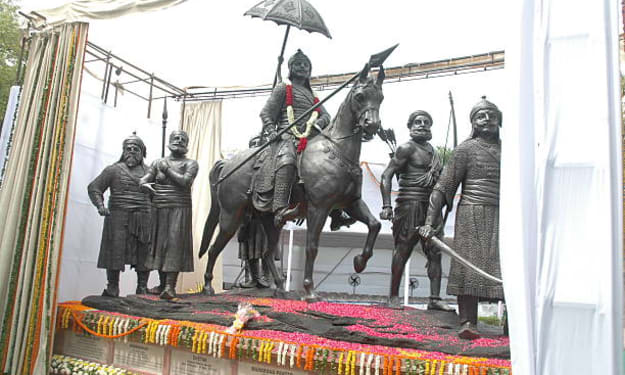
Narendra Modi, born on September 17, 1950, is an Indian politician who has been serving as the Prime Minister of India since May 2014. Here is a brief overview of his political journey:
1. Early Life:
Narendra Damodardas Modi was born in Vadnagar, a small town in Gujarat, India, to a family of grocers. He belonged to the Ghanchi community, which is categorized as an Other Backward Class (OBC).
2. Entry into Politics:
Modi joined the Rashtriya Swayamsevak Sangh (RSS), a Hindu nationalist organization, during his teenage years. He later became a full-time pracharak (campaigner) for the organization.
3. Association with the Bharatiya Janata Party (BJP):
In the early 1980s, Modi joined the Bharatiya Janata Party (BJP), the political arm of the RSS. He rose through the ranks, holding various organizational positions.
4. Chief Minister of Gujarat:
Modi became the Chief Minister of Gujarat in 2001. His tenure as Chief Minister was marked by economic development, but it was also marred by controversies, particularly regarding the handling of the 2002 Gujarat riots, which resulted in significant communal violence and drew both national and international criticism.
5. Re-elections as Chief Minister:
Modi served as the Chief Minister of Gujarat for four consecutive terms from 2001 to 2014. During this period, Gujarat witnessed significant economic growth, infrastructure development, and improvements in various sectors.
6. Prime Ministerial Candidacy and 2014 Elections:
In 2014, Narendra Modi was declared the prime ministerial candidate for the BJP. The party won a decisive victory in the general elections, securing a majority of seats in the Lok Sabha (lower house of Parliament). Modi became the 14th Prime Minister of India.
7. First Term as Prime Minister (2014-2019):
During his first term, Modi's government focused on economic reforms, infrastructure development, and social initiatives such as Swachh Bharat Abhiyan (Clean India Campaign) and Pradhan Mantri Jan Dhan Yojana (financial inclusion program).
8. 2019 Re-election:
In the 2019 general elections, Narendra Modi led the BJP to another significant victory, securing a larger mandate. His second term saw the abrogation of Article 370, which granted special autonomy to Jammu and Kashmir, and the passage of the Citizenship Amendment Act (CAA).
9. Handling of COVID-19
Modi's second term faced challenges, including the COVID-19 pandemic. The government implemented nationwide lockdowns to curb the spread of the virus, but the measures also had economic and social implications.
10. Ongoing Leadership:
As of my last knowledge update in January 2022, Narendra Modi continues to serve as the Prime Minister of India. Please note that there may have been further developments or changes since then.
Entry into Politics:
Modi joined the Rashtriya Swayamsevak Sangh (RSS), a right-wing Hindu nationalist organization, at a young age. His association with the RSS eventually led him to join the Bharatiya Janata Party (BJP), the political wing of the RSS.
Political Rise in Gujarat:
Modi rose through the ranks in the BJP and became the Chief Minister of Gujarat in 2001. He remained in office for three consecutive terms until 2014. His tenure as Chief Minister was marked by economic development initiatives, but it was also marred by controversy, particularly regarding the handling of the 2002 Gujarat riots.
Controversies and Criticisms:
The 2002 Gujarat riots, in which communal violence resulted in the death of over a thousand people (predominantly Muslims), led to severe criticism of Modi's government. He faced accusations of not doing enough to control the violence and providing inadequate assistance to the affected communities. Modi has consistently denied any wrongdoing and has been cleared of direct involvement by various investigations.
Economic Policies in Gujarat:
Modi's tenure as Chief Minister of Gujarat was marked by a focus on economic development, attracting investments, and implementing policies that aimed at fostering industrial growth. The "Gujarat model" of development, which emphasized economic reforms and infrastructure development, became a central theme of his political narrative.
Prime Ministerial Candidacy:
In 2013, Narendra Modi was named the BJP's candidate for the Prime Minister's office for the 2014 Indian general elections. His campaign focused on economic development, good governance, and a promise to bring about positive change.
Prime Minister of India:
The BJP, under Modi's leadership, won a decisive victory in the 2014 elections. Narendra Modi became the 14th Prime Minister of India on May 26, 2014. His government has implemented various economic and social reforms, and he has been known for his charismatic leadership style.
Re-election in 2019:
Modi led the BJP to another significant victory in the 2019 general elections, securing a second term as Prime Minister.
Narendra Modi's political career has been characterized by both strong support and criticism. Supporters praise his leadership for economic reforms and infrastructure development, while critics raise concerns about issues such as religious and social tensions, freedom of expression, and the handling of certain events during his tenure.






Comments
There are no comments for this story
Be the first to respond and start the conversation.